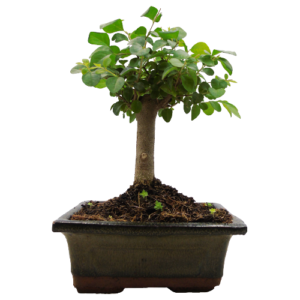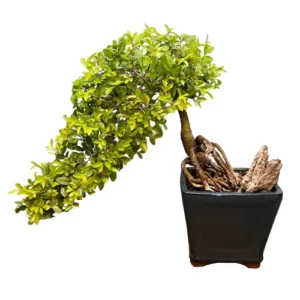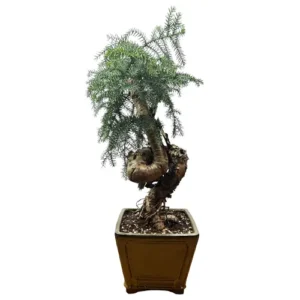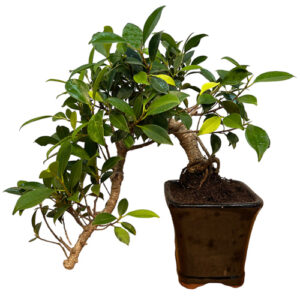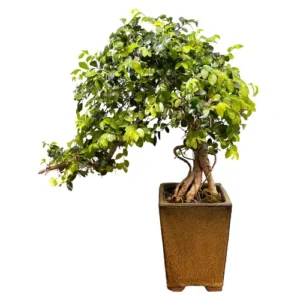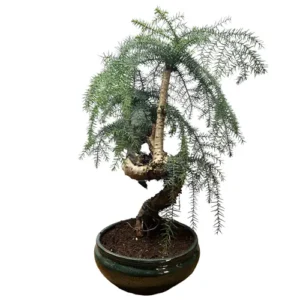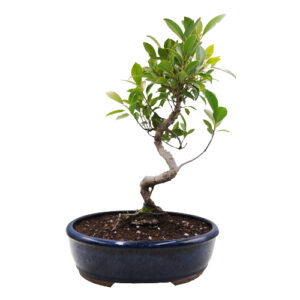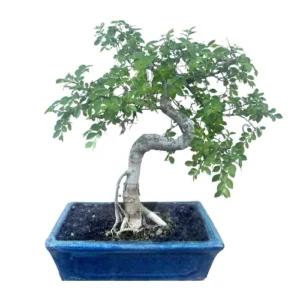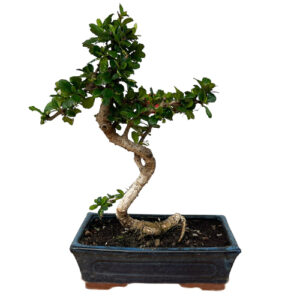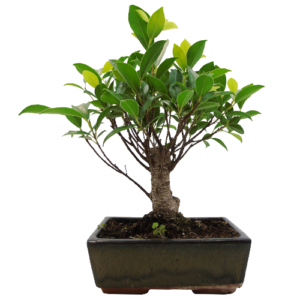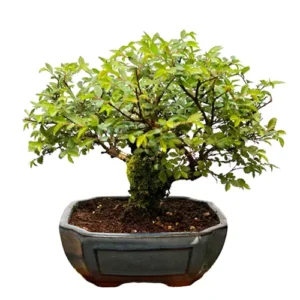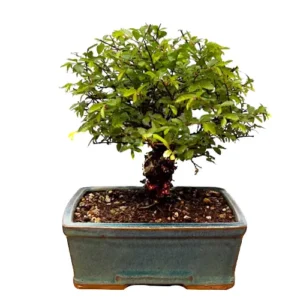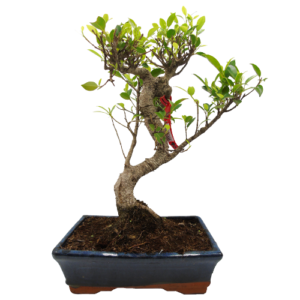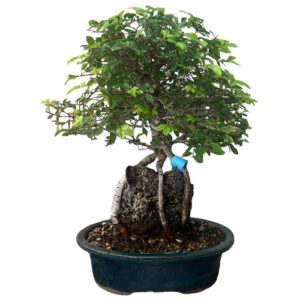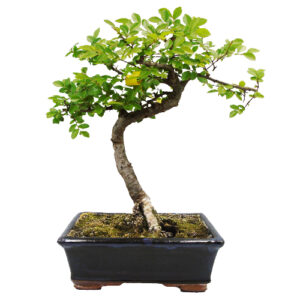Tamarix
Tamarisk Bonsai
Native to the deserts of Africa and Eurasia. Tamarix is a wide genus of shrubs and small trees found across marshes and deserts, known to dry out wetlands. A visually arresting bonsai, tamarisk displays needle-like leaves and leafy small flowers.
Tamarisk Bonsai Care Tips
Placement
For Tamarisk to thrive they need full sun but can withstand semi-shade. For temperate climates like the UK, an indoor location is advised as this species enjoys hotter climates. While hardy to temperatures down to -5 degrees C, this desert species appreciate a heat up to 35 degrees C.
Watering
Be sure to keep the soil moist at all times. Water plentifully particularly during the summer. Judge by assessing the top inch layer of soil for moisture. Do not waterlog the plant with overwatering. Reduce your watering come the winter months.
Tamarix appreciate misting. This can be achieved by using a mister to spray the leaves, as well as placing a gravel tray under the pot to create a more humid microclimate around the tree and reduce evaporation from the leaves.
Feeding & Fertilising
Make sure to feed your Tamarisk bonsai on a fortnightly basis across the growing season.
Pruning & Wiring
Pruning your bonsai is important not only to create or maintain an aesthetic style but also to ensure optimal health. Tamarix should be trimmed in the Spring. Cutting back hard should be done in autumn. Removing all branches and twigs is not a necessity as they can be bent and moulded into the desired shape.
Tamarix are suitable for cascade forms in particular due to their weeping foliage. Wiring downward is required for its weeping foliage. Be mindful that this is a fast-growing species that can easily cause set wires to cut into its bark. Keep vigilant on when to remove wires. We recommend using wires with a thickness that matches the thickness of the branch: if the wire you choose is too thick you will damage the bark. If it is too thin, it won’t be effective.
Repotting
Repotting your tree is an important way to provide a fresh and suitable soil mix and ensure appropriate root health. Repot in early spring. Generally, your dawn redwood will need to be re-potted once every two years if it is young, while older ones can stay in their pots for longer. However, you should always check if it has become root-bound before you change pots. You can do this by lifting the tree gently out of the pot by the main trunk and examining the root system. You will know it is ready if you can see that the roots are circling around each other and the pot. If, however, they still appear contained in the soil, you should place it back and wait until the following spring to check again.
Trees that are ready for repotting will require root pruning, a suitable new pot and appropriate soil mix.
When repotting, do not cut back the root mass by a large amount, and choose a well-draining soil mix that has a neutral or slightly higher PH value of 5-6 but not over 7. We tend to use a mixture of different speciality bonsai soils on our trees. Every species is different so please contact us for free soil-mix advice or to take advantage of our repotting service.
Bonsai make for a one-of-a-kind indoor plant offering elegance, nature and art all in one minute form. Across an array of exquisite and erudite species, they all demand their own specific care and cultivation needs in order for their beauty to flourish. We have an extensive library of care guides for indoor bonsai trees so you can make an informed and considered choice. It’s not about selecting the perfect bonsai, it’s about selecting the perfect bonsai for you.
Tamarisk Bonsai - Typical Queries
How to propagate a Tamarisk bonsai?
Tamarisk bonsai can be propagated with cuttings and air layering. Hardwood cuttings can be taken in Winter, but you can also take semi-ripe ones in the Summer. Air layering should take place in the Spring.
Do Tamarisk bonsai get pests and diseases?
Tamarisk bonsai are usually trouble-free species, however, they still can be susceptible to some pests and diseases. These include aphids, cankers, slugs, leaf miners, caterpillars and root rot.
Can you keep a Tamarisk bonsai outdoors?
It is possible to grow Tamarisk outdoors with appropriate shelter and heating from the starker winter conditions. However, this is a species that grows best with heat and some protection from the sun. For a temperate climate like the UK, an indoor set up is advisable.

